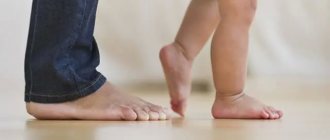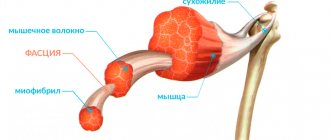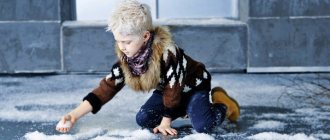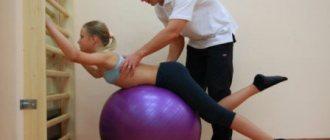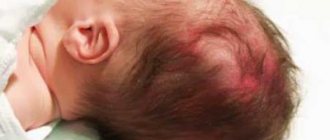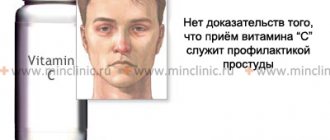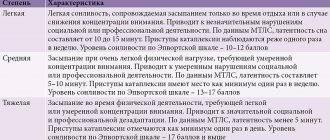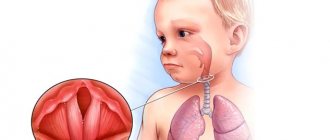Autism is a specific developmental disorder. To understand what it is, you need to definitely understand the following - our brain constantly processes various information that enters it with the help of visual, tactile, auditory, and olfactory analyzers.
The peculiarity of this disease is that the perception of the signals that our brain perceives is impaired. And thus, some signals for children with autism are very intense, while others may not be noticed at all; there is not that dependence that all ordinary people have, when strong signals are perceived intensely, weak ones - weakly. As a result of incorrect perception of signals, the child’s contacts with the outside world are disrupted; a person on the autistic spectrum reacts to it differently.
The main task of parents is to notice in time that their child is different and not like everyone else, in order to help him socialize in time and establish contact with the outside world.
Early signs of autism in children under two years of age
April 18, 2021 Useful, ASD, Theory
One of the success factors in correcting ASD is identifying the problem as early as possible. What should you pay attention to in a child’s behavior and development?
Materials taken from the article “Autism Spectrum Disorders in Infancy and Toddlerhood: A Review of the Evidence on Early Signs, Early Identification Tools, and Early Diagnosis” (Barbaro & Dissanayake, 2009), as well as “Early Identification of Autism Spectrum Disorders: Recommendations for Practice and Research" (Zwaigenbaum et al., 2015).
Often, loved ones notice problematic aspects in the child’s development long before a disappointing diagnosis is made (and this is only at the age of four or five years). Precious time is lost, and the family is exhausted by a long-term marathon trying to overcome the situation on their own. Therefore, it is so important to identify signs of ASD as early as possible and promptly begin therapy using scientifically proven correction methods. This is especially true for the risk group: children whose older brother or sister is autistic, as well as those children whose development, according to the results of screening per year, does not correspond to the norm. This intervention strategy significantly increases the chances of better adaptation in the future. Over the past decade, researchers have made progress in studying the early detection of ASD. They focused on children aged 6 months to two years. There is also work that has already assessed the role of “preventive” interventions, for example, aimed at improving parent-child interactions to minimize the severity of autistic symptoms (Green et al, 2013).
We will not go into detail about scientific methods and statistical analysis, but will simply present four conclusions that follow from a selection of studies on this topic.
Down syndrome and autism: differences
The following table will help you determine the difference between autism and Down syndrome:
| Autism | Down syndrome |
| Neurodevelopmental disorder. | Genetic disease. |
| The reason is genetic changes. | The reason is the presence of the third chromosome 21 (this is a random phenomenon, although studies have shown that the chances increase if parents of an older age group have it). |
| Diagnosed in the early years of the child. This is mainly due to the fact that this condition affects his cognitive functions, and it is only when specific developmental milestones cannot be achieved that parents notice that something is wrong. | Can be diagnosed in the womb. |
| Physically, an autistic person has no special characteristics. | People with diabetes have specific facial features and may suffer from other forms of physical disabilities. |
| People with autism can suffer from various forms of mental illness and be geniuses at the same time. | They have moderate mental retardation. |
| Most often antisocial. | Changes and social cues are easier for people with Down syndrome to understand than for people with autism. They also express their feelings better. |
Finding #1: Clinical features of ASD are highly heterogeneous.
This means that ASD implies a variety of everything: 1) causes and conditions of occurrence; 2) features of neurobiology; 3) the nature of the start and further trajectory; 4) levels and rates of cognitive and speech development; 5) degree of adaptation; 6) combinations with other disorders and diseases. Given this, it is not surprising that early childhood signs of autism vary. Some children show little interest in interacting with others as early as six months, while others have difficulty acquiring speech and gradually lose communication skills during the second year of life.
First group
Children exhibit atypical behavior in early childhood. During this period the following appear:
- repetitive motor behaviors (clapping, hand washing, twirling hair on finger);
- fascinated by lights, ceiling fans, or other objects that move in cycles;
- refusal of new food products introduced into the diet;
- language problems (poor understanding of speech and use of gestures), the child may not hear;
- lack of speech.
In parallel with the above features, other symptoms may be present: seizures, agitation, muscle hypertonicity, hip dysplasia, nystagmus (constant eye movement) or severe hypotonia (low muscle tone) with delayed motor skills.
Conclusion No. 3: Reliable behavioral markers of ASD have not yet been identified for children under one year of age.
A number of factors explain this state of affairs. Babies develop differently, with social and cognitive skills developing over time. In addition, the experimental methodology itself does not always make it possible to determine whether a particular difference from peers is a predictor of autism and/or a hallmark of ASD. In addition, the classic symptoms accepted in diagnosis may be associated with later stages of maturation of the nervous system. Behavior changes radically with age. What we see at six months is transformed and becomes the basis for completely different, more complex forms of behavior. It is impossible to say exactly how early markers will correspond to symptoms at 2-3 years. What does science say? Results from infant samples are published periodically, sometimes contradicting each other. A number of studies, for example, list signs for the second half of life: deficits in eye contact and response to names, atypical sensory behaviors, repetitive actions and strange movements, a different picture of the use of gestures in communication. Another study reports that children with autism gradually look at faces less and less between two and six months of age. However, it is difficult to correlate oculographic data with behavioral signs observed by parents and clinicians. Thus, no clear markers have yet been identified. But we can and must monitor how the child masters key milestones in the areas of motor skills, speech, object operations, social skills and the emotional sphere.
Symptoms of Autism
Signs of autism in children under 1 year of age
At this age, it is necessary to pay attention to whether the child’s development corresponds to the main stages. Here are a few things to worry about:
- Shows no interest in persons.
- Doesn't look into your eyes, doesn't smile, and it may seem like your baby is looking right through you.
- Doesn't always respond to sounds.
- Doesn't respond to his name, turn to see where the sound is coming from, or show any activity when he hears a loud noise. In other situations, his hearing may seem excellent.
- Doesn't like being hugged or touched.
- Shows no interest in typical children's games.
- Does not babble or show other early signs of talking.
- Does not use gestures as a way of communication.
Signs of autism in children under 2 years of age
Among the most common:
- Doesn't use gestures.
- Doesn't shake his head: yes or no.
- Doesn't indicate what he wants.
- Does not point out objects to show interest in the world around them. By 14 to 16 months, most healthy children will direct your attention to something they are interested in, such as a puppy or a new toy.
- Does not use single words at 16 months or two-word phrases at 24 months.
- Lost verbal or social skills. Used a few words to talk or showed interest in people, but no longer does so.
- Problems with walking.
Signs of ASD in 3-year-old children
Some children develop symptoms of autism in the first few months of life. Others do not show symptoms for up to two years. Mild signs are difficult to detect and may be mistaken for a shy temperament or personality trait.
You may see some of the signs of autism in three-year-old children.
Communication skills:
- does not respond to name;
- avoids eye contact;
- prefers to play alone;
- does not like or avoids physical contact with other people;
- not interested or doesn't know how to make friends;
- has difficulty expressing or talking about feelings and has difficulty understanding others' feelings.
Language and communication skills:
- speech and language skills are delayed (lags behind peers);
- echo conversation - repeating the last few words of a conversation.
Behavioral skills:
- performs repetitive movements;
- toys or other objects are arranged in an organized manner;
- do not like changes in everyday life;
- cyclical repetitions of game movements;
- frequent observation of fire, water and spinning wheels.
Other potential signs of autism:
- impulsiveness;
- aggressive behavior;
- severe tantrums;
- picky eating;
- lack of feeling of fear.
Having any of these signs or symptoms may be normal, but having more than one of them, especially with a speech delay, should be of additional concern.
What are the signs of autism in a 4 year old child?
Signs of autism in children become more obvious as they age.
Your child may show some of the following signs of autism.
Communication skills:
- does not respond to his name;
- avoids eye contact;
- prefers to play alone than to play with others;
- doesn't tell stories;
- not interested in interacting or communicating with others;
- dislikes or actively avoids physical contact;
- grimaces;
- has difficulty understanding other people's feelings and does not express his own well.
Language and communication skills:
- cannot create sentences;
- repeats words or phrases over and over;
- does not answer questions appropriately or follow directions;
- does not understand counting or time;
- changes pronouns (for example, says “you” instead of “I”);
- rarely or never uses gestures or body language such as waving.
Behavioral disorders:
- performs repetitive movements;
- builds toys or other objects in a certain sequence;
- gets upset by small changes in daily life;
- plays with toys the same way every time;
- loves certain parts of objects (often wheels);
- has obsessive interests;
- repeats certain procedures cyclically.
Additional signs of autism in 4 year olds:
- hyperactivity or short attention span;
- impulsiveness;
- aggression;
- hysterics;
- irregular reactions to sounds, smells, tastes, sights, or textures;
- inappropriate emotional reactions.
Signs of autism in children 5 years old
Social Communication Red Flags:
- the child does not share observations or experiences with others;
- generally does not look directly at other people (sometimes called lack of eye contact);
- there may be a lack of speech or unusual speech patterns such as repetition of words and phrases (echolalia), refusal to use “I”, substituting “you” and “you”;
- may be reluctant to be hugged, prefers to be around familiar people, and may seem to treat people as objects and a source of comfort;
- avoids social situations, preferring to be alone;
- there is limited development of play activities, in particular creative play;
- increased tearfulness or unusual lack of crying.
Behavioral red flags:
- frequent, repetitive movements such as shaking or flapping hands, prolonged rocking or spinning of objects;
- having an obsessive interest in certain toys or objects while ignoring other things;
- being extremely resilient to changes in procedures or their environment;
- Difficulty eating – cannot chew hard objects;
- Difficulties often arise with potty training;
- sleep problems;
- irritation or aggression when visiting crowded and noisy places.
Signs of autism at age 6
The signs of autism from 6 to 15 years of age are similar, and in the absence of full correction, they can worsen every year.
Social/emotional problems:
- difficulty creating and maintaining friendships;
- isolated or repetitive play;
- atypical interests compared to peers;
- disobedient or unaware of how his actions affect others;
- expresses severe anxiety, depression, anger, or fear.
Speech skills:
- monotone or unusually formal speech;
- literal interpretation of phrases, does not understand sarcasm or jokes;
- low/poor nonverbal communication skills;
- may shut down and not respond to requests or questions.
Behavioral skills:
- increased interest/hyperfocus on one specific topic, interest, or object;
- intense reaction to changes in everyday routine;
- cyclic hand movements, rocking, or other gestures when upset or excited;
- excessive reactions to touch, textures, pain, or sounds;
- poor motor and coordination skills;
- anxiety, depression, selective silence.
Conclusion No. 4: Developmental dynamics may indicate ASD
“Dynamics” refers to the intensity, pace, and direction of skill development and behavioral changes. Dynamic data is more informative than single slices. It is believed that the trajectory of early development (visual perception skills, speech, etc.) in children with ASD is different. It is very common to see that skill formation, once on par with norms, slows down globally after the first year of life. An atypical picture of social development is also characteristic: in the period from one to one and a half years, children smile less and less often at another person, respond to names, maintain eye contact and use vocalizations to communicate.
Let's summarize. If your son or daughter is significantly different from his peers in certain aspects (speech, play, motor skills, interests, interaction, problem behavior) or is part of a risk group (late child, close relatives with autism), be sure to clarify the situation. Do not rely on the mantras from the opera “He will outgrow” and “The son of Baba Nadya spoke at the age of five.” If possible, do not contact your local pediatrician, but go straight to a specialized specialist who has the appropriate diagnostic tools. Even if there is a waiting list for the latter, there is a lot you can do before your consultation! It is very important to collect information in advance not only from the medical plan.
- Record on video indicative moments: exactly how the child plays himself, reacts to his name and various situations of social interaction (demands, physical contact, refusal of what he wants, etc.).
- Start keeping a record of episodes of aggression, self-harm, and other problematic behaviors. Include what exactly the child did, the time and duration of the episode, antecedents, and consequences.
- Count how many words and gestures he understands and how many he uses.
- Record your requests: what you asked, how many times a day, how exactly you asked.
Prepare for your appointment with a list of questions and medical and behavioral information. This will speed up the process and provide timely access to qualified assistance.
Group two
This group includes children of middle and older age categories. They experience discomfort in acquiring and using social and language skills. This condition is usually accompanied by excessive irritability, restlessness and cyclical behavior. According to research results, the peak manifestation of behavioral changes occurs at the age of 7 years.
Recommendations for parents:
- The child is not intentionally being capricious; in this way he is trying to explain or achieve a goal. All behavioral characteristics directly depend on the peculiar functioning of their sensory channels and metabolism. The first thing to do is to understand the reason for this behavior.
- Children diagnosed with ASD/SD are teachable. They just need more time and perseverance to master new skills. It is important to distribute the load evenly.
- The main problems of a dual diagnosis: behavioral characteristics, speech, communication.
- Insubordination, hysterical attacks and aggression are not symptoms of ASD/SD. These are signals with which the child tries to talk about his feelings and needs.
- The child’s behavior is corrected through individually developed programs.
- It is important for parents to learn self-control skills.
- Avoid games with a repeating cycle - introduce games to develop motor skills, smell, hearing, perception and memory.
The myth about post-vaccination
There is an opinion that autism develops in a child after vaccination of young children. However, such a theory has absolutely no evidence base. Many scientific studies have been conducted, and none of them have found a connection between vaccination and the occurrence of the disease.
It may happen that the time when the child was vaccinated simply coincided with the moment when the parents noticed the first signs of autism. But not more. Misconception in this matter led to a sharp decrease in the level of vaccination of the population, and as a result to outbreaks of infectious diseases, in particular measles.
Causes, symptoms and signs of the disease
Autism entails a delay in the patient’s full mental development. More often than not, these children do worse than their peers at school. The disease affects the ability of an autistic child to concentrate and remember learned material.
Profound mental retardation is possible in those children whose autism was caused by other severe diseases of the brain or nervous system. The main feature of autism is selective intelligence. The fact is that some autistic people may excel in music or art, but fall significantly behind in other subjects. An example of this would be some famous figures in history who made significant contributions to science, such as Albert Einstein, who was also autistic.
It is impossible to determine externally whether a child has a disease such as autism. The exact causes of such a disorder of the nervous system are not fully known, but several main provoking factors have been named:
- Obesity and other maternal metabolic disorders.
- Cerebral palsy.
- Oxygen starvation of a child during pregnancy or childbirth.
- Infectious diseases that the mother suffered while pregnant.
- Hereditary predisposition.
Making an accurate diagnosis is possible only after a complete examination of the child. It is possible to suspect early autism if you pay attention to the child’s behavioral characteristics. Pathology is possible under the following conditions:
- the child likes to play alone and does not show a desire to communicate with others;
- cannot tolerate loud noises;
- shows nervousness when touched by others;
- always looks away when adults talk to him;
- is more often silent, does not know how to clearly explain what he wants;
- throws frequent tantrums;
- the child lacks the instinct of self-preservation.
In addition, early autism can be suspected in a passive or hyperactive child if there are additional signs of the disease listed above.
Clinical manifestations of forms of autism
Each form of autism also has its own specific signs and symptoms. Let's take a closer look at the most common of them.
Kanner syndrome or infantile form of autism
This category includes childhood, infantile autism and other autistic disorders that manifest in children from one to three years of age.
They are characterized by the following signs:
- lack of interest in relationships with other people, starting from an early age;
- stereotyping in games;
- fear of any changes in everyday life and in the surrounding area;
- developmental delay;
- lack of speech function for communication with others;
- the appearance of speech stereotypies;
- ignoring pain and other external stimuli.
Asperger's syndrome
Asperger's syndrome or high-functioning autism is similar in many ways to Kanner's syndrome. However, with this form of the disease there are no disturbances in speech development and cognitive abilities are highly developed.
With this form of mild autism, children have well-developed thought processes, have a distorted perception of the surrounding reality and themselves, and have difficulty concentrating. Other psychological and physiological symptoms of this disease are as follows:
- stereotypical behavior and limited interests;
- impulsive behavior;
- attachment to the familiar environment;
- impairments in communication skills;
- detachment of the gaze, or its focus on one point.
Atypical form
The atypical form of autism is characterized by manifestation at a later age. It also occurs in adults, especially those with mental retardation and other developmental diseases. Signs of this form of the disease include:
- emergence and development after three years;
- serious deviations in social interaction between the patient and people around him;
- limited and stereotypical behavior that occurs with a certain frequency.
The complexities of fatherhood
Fathers tend to avoid the daily stress of raising an autistic child by spending more time at work. However, they also experience feelings of guilt and disappointment, although they do not talk about it as clearly as mothers. In addition, they are faced with special financial burdens to provide care for a “difficult” child, which are felt even more acutely due to the fact that they promise to be long-term, in fact lifelong. The brothers and sisters of such children grow up in a special situation: psychologically and in everyday life, they also experience certain difficulties, and parents in such a situation are often forced to sacrifice their interests.
Stereotypes
An autistic child is extremely bound by his own existing stereotypes. His entire inner world is squeezed into rigid boundaries, beyond which it is a tragedy for him. This is due, first of all, to the so-called neophobia - fear of everything new. However, such children can develop phobias for anything. In particular, autistic children often suffer from sensory phobia - they are afraid of household electrical appliances that make sharp sounds, the sound of water, darkness or bright light, closed doors, high-necked clothes, etc.
When an autistic child feels particularly bad, he or she may become aggressive and self-injurious. An explosion of despair with destructive force is usually directed against interference in his life and attempts to change existing stereotypes. Selectivity in contacts and lack of visible attachment even to close people stems from a whole system of fears, and as a result, prohibitions and self-restraints.
Maternal perception
The greatest problems fall on the mother of an autistic child, since from the very birth she does not receive positive emotions, the immediate joy of communication, which more than covers all the hardships and fatigue associated with daily worries and anxieties. The child does not smile at her, does not look her in the eye, does not like to be held in her arms; sometimes he doesn’t even single her out from other people, doesn’t give any visible preference in contact. The consequence of this is the development of depression, irritability, and emotional exhaustion.
It is characteristic that the need for communication in autistic children is initially not impaired. Such a child may be deeply attached to a loved one, and a human face is as significant for him as for anyone else - he can only withstand eye contact for a very short time. Thus, an autistic child is more likely unable, rather than unwilling, to communicate with the people around him.
Testing a child at home
You can detect the presence of autism in a child at home using various tests. At the same time, you should know that test results alone are not enough to make a diagnosis, but this will be another reason to contact a specialist. There are many tests designed for children of a certain age:
- testing the child on general development indicators, intended for children under sixteen months of age;
- M-CHAT test or modified autism screening test, for children sixteen to thirty months;
- The CARS Autism Rating Scale is used to test children aged two to four years;
- The ASSQ autism screening test is available for children aged six to sixteen.
M-CHAT test or modified autism screening test
Questions:
- Does your baby enjoy being rocked on your lap or in your arms?
- Does the child show interest in other children?
- Does your child like to use objects as steps and climb up them?
- Does your child like to play hide and seek?
- Does the child imitate actions during play (pretend to be talking on the phone or rocking a doll)?
- Does the child use the index finger when necessary?
- Does he use his index finger to emphasize his interest in some action, object or person?
- Are the toys used by the child for their intended purpose (rolling cars, dressing dolls, building forts from blocks)?
- Has the child ever focused on objects that interested him, bringing them and showing them to his parents?
- Is the child able to maintain eye contact with adults for more than one or two seconds?
- Has your baby ever shown signs of hypersensitivity to acoustic stimuli (asking to turn off the vacuum cleaner, covering his ears when listening to loud music)?
- Does the child respond to smiling?
- Does the child repeat the movements, intonation and facial expressions of adults?
- Does the child respond when his name is called?
- When pointing to an object or toy in the room, will the child look at it?
- Can the child walk?
- If you look at any object, will the child repeat your actions?
- Have you noticed your child doing unusual things with his fingers near his face?
- Does the baby try to attract attention to himself and his actions?
- Does your child appear to have a hearing problem?
- Does the child understand what the people around him are talking about?
- Have you ever noticed your baby wandering aimlessly or doing things automatically, giving the impression of complete absence?
- When meeting strangers or encountering incomprehensible phenomena, does the child look into the parents' faces to observe their reaction?
Transcript of the test
For each test question you should answer “Yes” or “No”, and then compare the results obtained with those given in the transcript:
- No.
- No (critical point).
- No.
- No.
- No.
- No.
- No (critical point).
- No.
- No (critical point).
- No.
- Yes.
- No.
- No (critical point).
- No (critical point).
- No (critical point).
- No.
- No.
- Yes.
- No.
- Yes
- No.
- Yes.
- No.
Best materials of the month
- Coronaviruses: SARS-CoV-2 (COVID-19)
- Antibiotics for the prevention and treatment of COVID-19: how effective are they?
- The most common "office" diseases
- Does vodka kill coronavirus?
- How to stay alive on our roads?
If the answers to three ordinary points or two critical ones coincide, then such a child should be consulted by a specialist.
